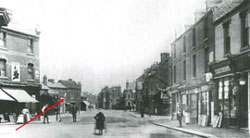There's More to Kidderminster than Carpets!

Kidderminster's weaving did not begin with carpets. As far back as the 1600s Kidderminster had a thriving spinning and cloth weaving industry.
There was a good climate in the river valley, a good supply of water and plenty of wool from the sheep on the surrounding hills. Around 1700, before the canal was built, there were around 400 hand looms in homes all around the town.
The quality of all cloth sold in the area was controlled by the Society of Weavers, who issued a seal of approval for each piece. These master weavers also controlled the training given to apprentices and journeymen, who had to weave for seven years before they were allowed to own a loom.
Many different fabrics with strange and wonderful names were woven on these hand looms, but Kidderminster became known particularly for its Bombazine – an expensive material woven from silk and worsted yarns. Bombazine was generally black and used for mourning, though there are a few samples of brighter colours in the collection at the Museum of Carpet. Bombazine hand looms were small and could easily be built in a high loft in people’s houses.
Weavers’ Cottages Special Significance
The cottages at 20-22 Horsefair are listed as “three houses with attic workshops dating from the mid and late 18th century with later alterations”, adding that “these buildings, which combine domestic and workshop functions are rare survivals from the period associated with the domestic worsted weaving industry in Kidderminster”.
It is very likely that 22 Horsefair, built before 1753, was originally designed as a dwelling with a handloom workshop above. The other two cottages were built slightly later without the distinctive high loft workshop, but they were certainly homes built for artisans, with trades ranging from confectionery to shoemaking. There is evidence that three members of the Slade family lived in the Horsefair and worked as weavers between 1757 and 1803. We don’t yet know if they lived at 22, but we hope that more research will unearth further details. Later, 22 was occupied by tailors and carpet weavers.
22 Horsefair seems to be a very rare example of an early weaver’s cottage. For this reason it is of considerable interest to the nation.